Two small Provisional schools opened during the drought of 1895 to 1905 at Brixton (1900) and Geera (1901)
Brixton School
BRIXTON was a watering stop for steam engines west of Barcaldine, peopled by a few railway families. Their children, with those of an engineer and two scalpers (dingo trappers) numbered 18 in 1900 when the provisional school opened in the charge of Miss Helen Shire.
The school suffered difficulties and committee disagreements but remained open because the Railway Department was prepared to move families there to boost numbers. Several times complaints were made against teachers for unfair treatment of children and in July 1914 the committee secretary, J. McDonald, who had banked school funds in his own name, was shot after a quarrel. But the school had its successes too and sometimes held functions which Barcaldine people attended.
The little school was a casualty of the depression. In 1926 when attendance dropped to 7, railway families moved in and the school battled on until 1934. Then one of the men moved to Brixton, A. E. Woods, made complaints against the teacher, Miss Gutteridge. The department ordered her transfer, the school closed and all efforts to re-open it failed. Before it closed in 1934 almost 200 children had attended.
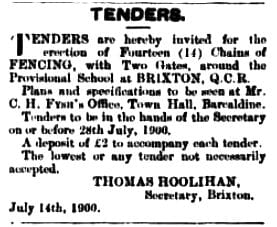
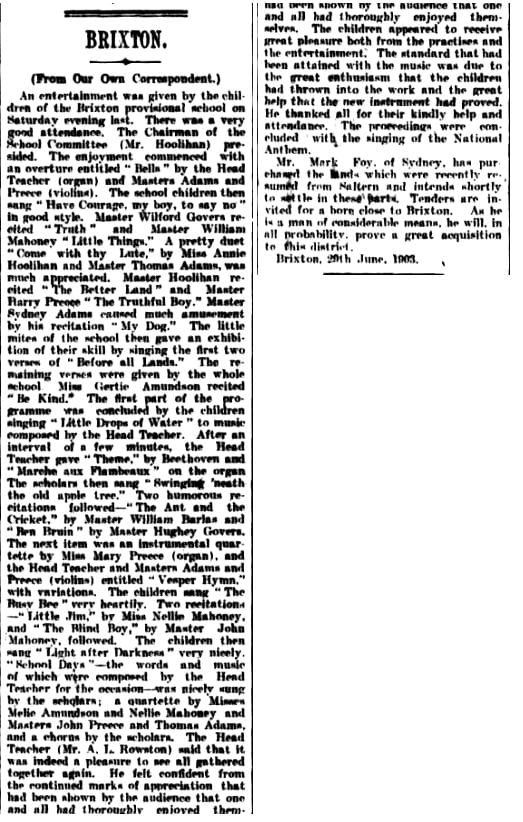
GEERA SCHOOL
At GEERA, 11 miles east of Barcaldine, the large Catholic family of T. (Tim) J. Hannay was taught by a private tutor. Tim Hannay sought to include other children so that his ‘school’ might be given provisional status.
He was informed in October 1900 that a reserve of five acres would be granted for the purpose. A classroom on the site was built by a member of his family and approved in February 1901 with an enrolment of 21. Miss Lavra Ludemann, from Woodford, opened the Geera Provisional School.
But numbers fell to 10 by 1903. This, combined with Hannay’s insistence on a teacher of Catholic faith, led to closure and all attempts to have the school re-opened failed.
The old school building became a camping place for swagmen and derelicts until the Hannay family was obliged to buy it back for £70 in 1916.

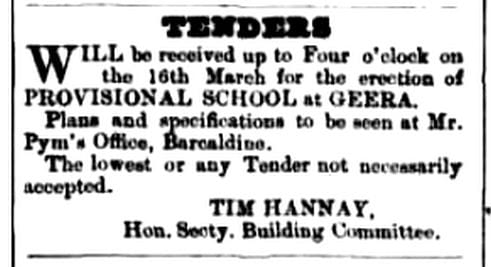
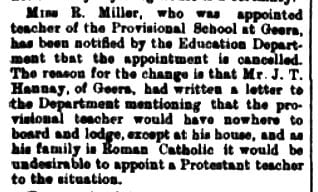
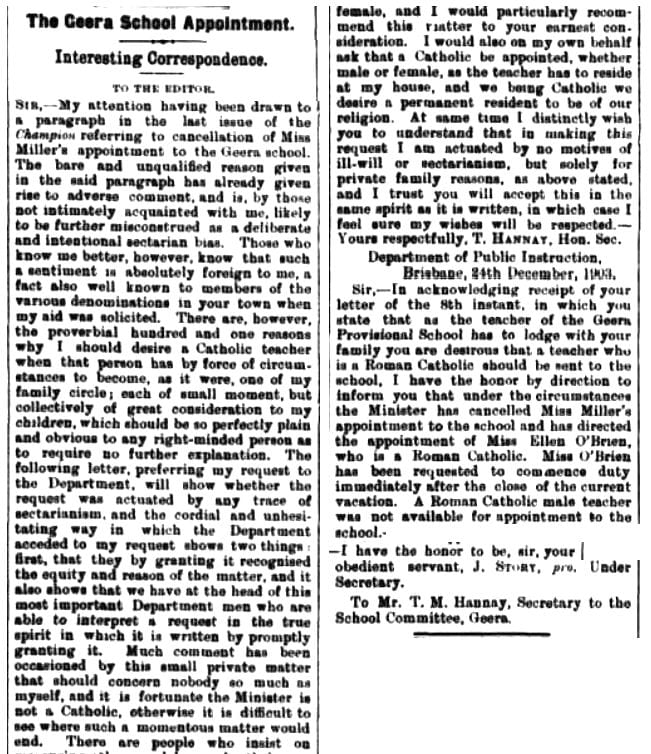
Text sources include: Hoch, Isabel. 2008. Pages 51, 63, 87
